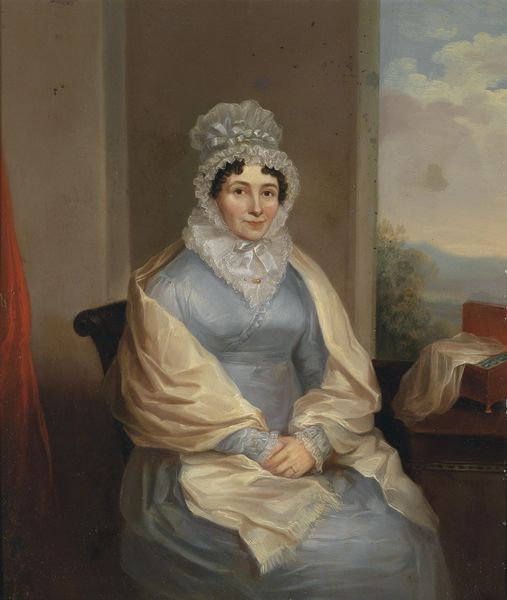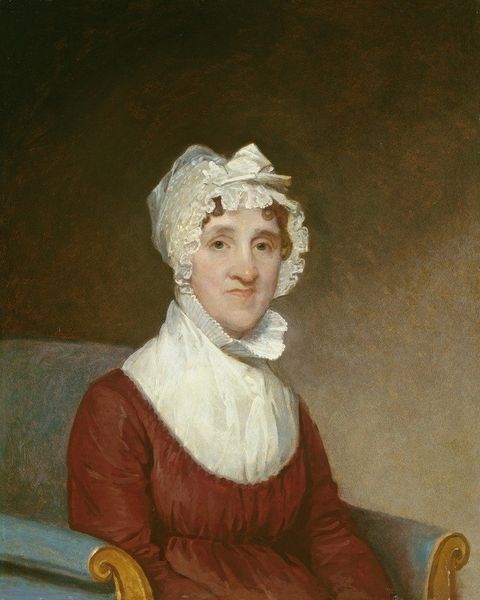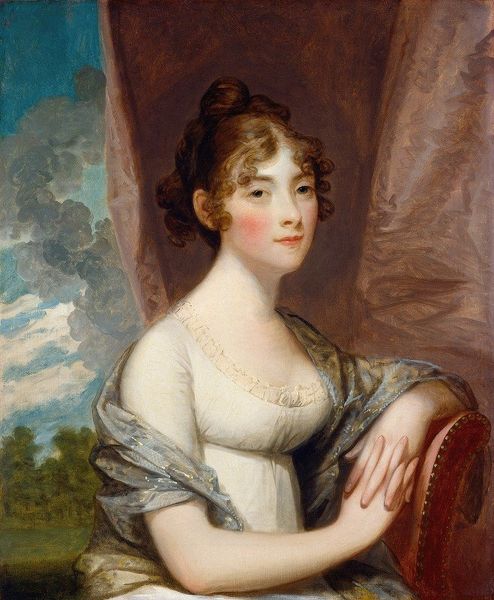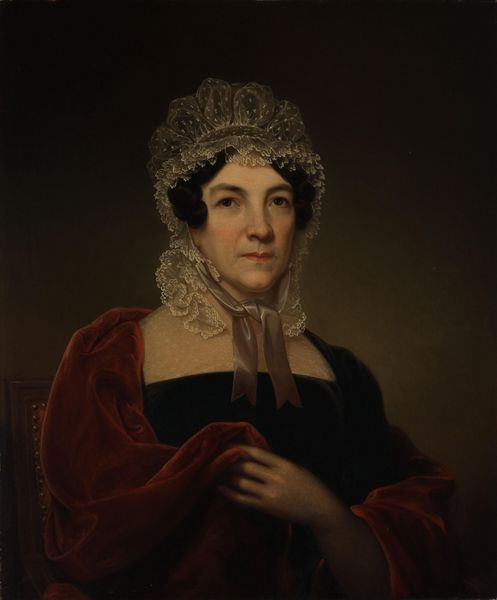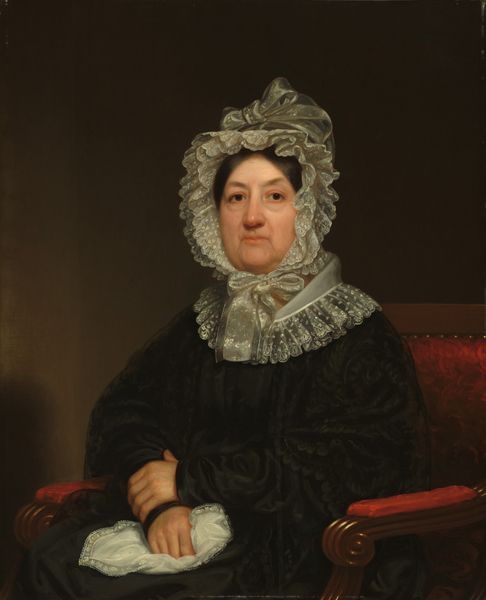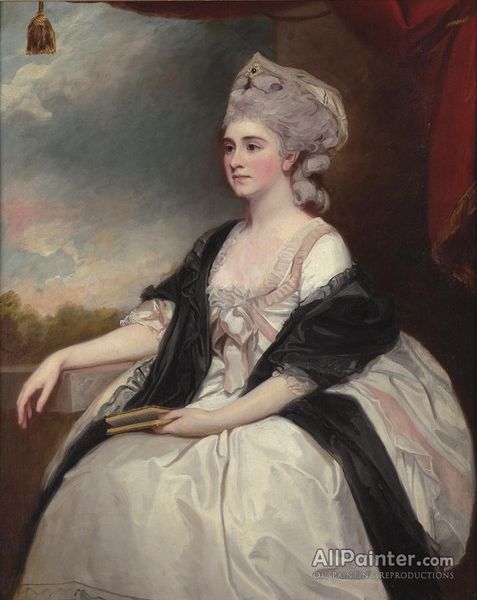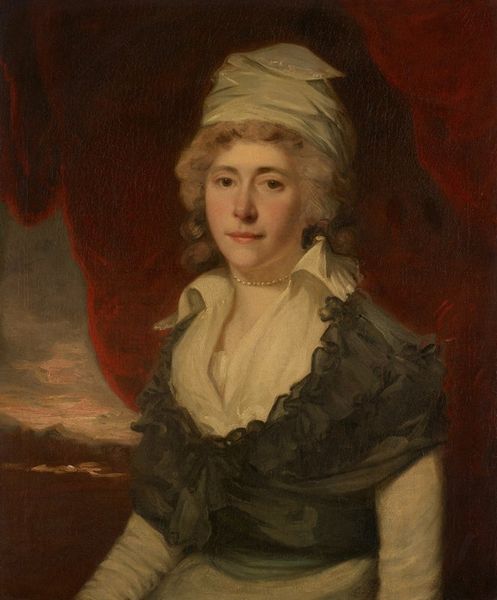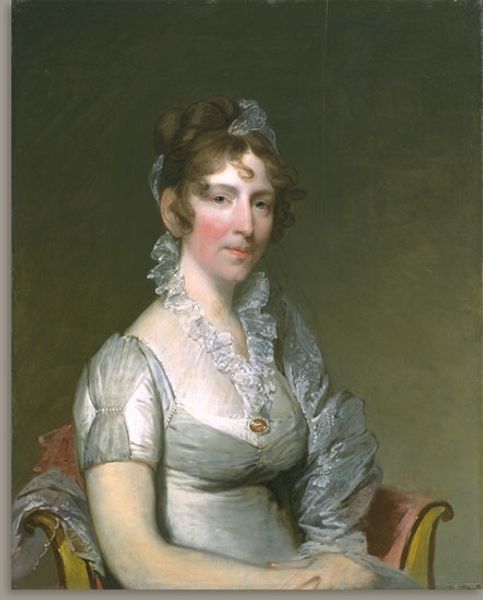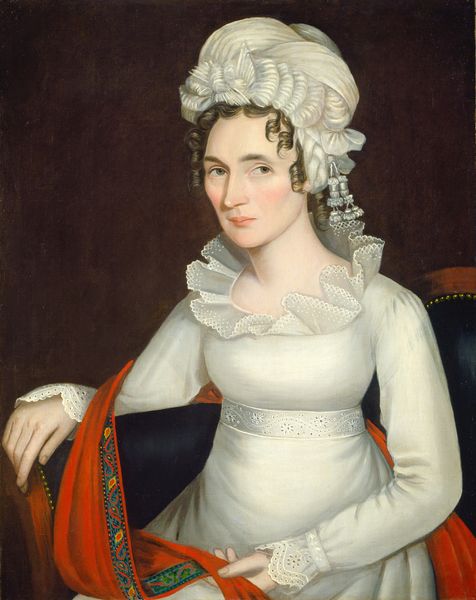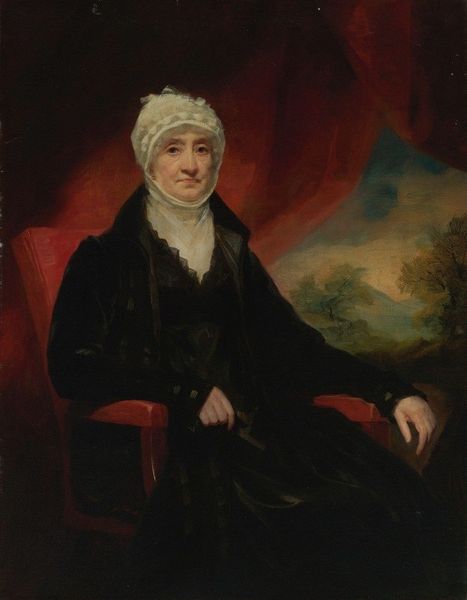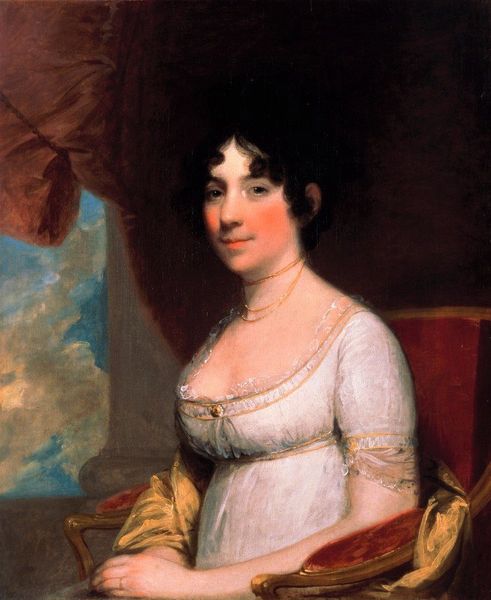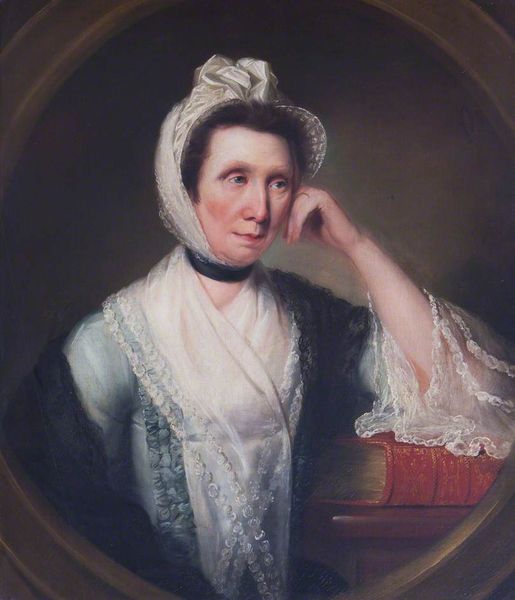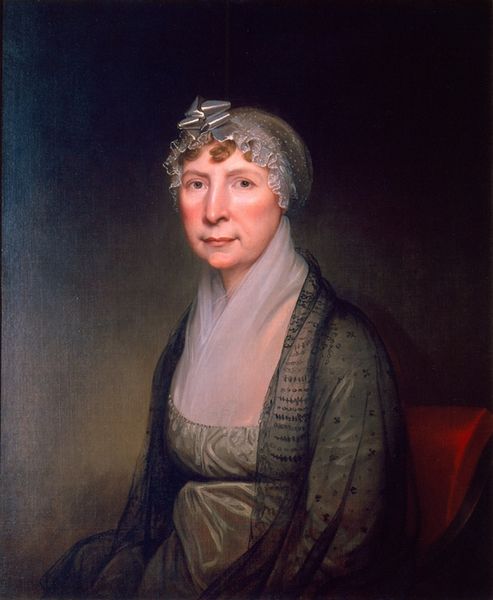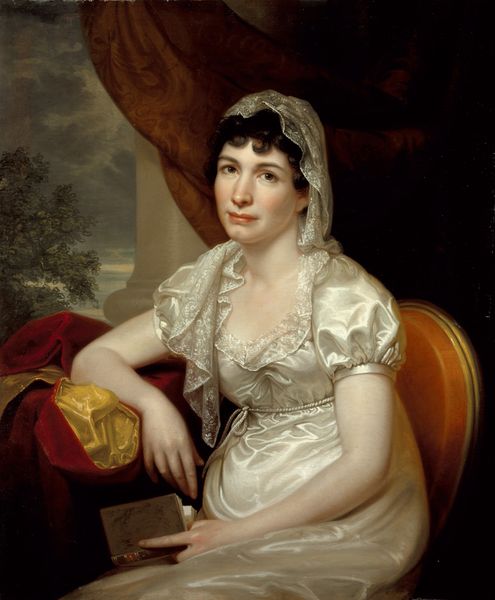
painting, oil-paint
#
portrait
#
painting
#
oil-paint
#
romanticism
#
history-painting
Copyright: Public domain
Curator: Good morning. We’re standing before Ralph Earl's "Mrs. Richard Alsop," painted in 1792. Earl captures his sitter, an American woman, in poised elegance using oil paints on canvas. Editor: There's a stillness here. A serene reserve that borders on melancholic, yet she seems undeniably confident. It almost feels as though she is daring you to say something. Curator: I'm drawn to the carefully arranged composition—note the interplay between the red drapery on the left, Mrs. Alsop herself in the center, and the tranquil landscape glimpsed through the window. The contrasting textures, the heavy fabric against the delicate lace, all contribute to a visual richness. Editor: It's fascinating how that landscape situates her in a wider context. Not just physical space, but social and political as well. Here she is posed in the traditional attire of white lace bonnet and shawl as if frozen within social expectations for upper-class women in the late eighteenth century. It really says something that the land just outside that window would've belonged to people dispossessed by American colonialism, if not outright cultivated by enslaved people who didn’t have any property rights at all! Curator: Indeed. Her gaze, too, is so direct and unyielding; it challenges the viewer to consider her position, perhaps within a society undergoing significant change. Look closely, you see a subtle commentary on wealth and status in post-revolutionary America through the formal attire that represents a burgeoning aristocratic class, and the painting almost feels staged to subtly boast Alsop’s privileged background and high status, yet, is the stiffness also highlighting constraints placed upon her? Editor: The detail with the lace speaks volumes, and so does the box or book on the table—all signs of leisurely comfort bought and paid for. How much was at the expense of enslaved labor at the time is very difficult to see within art like this, that instead chooses to memorialize white womanhood. Curator: But that’s a point of historical interpretation more than one based on art, wouldn’t you say? Even if read as glorifying Alsop, do not the compositional balance, lighting and tonality point to aesthetic choices separate from, although possibly influenced by the social milieu? Editor: Certainly we cannot deny the talent in those artistic choices. This painting acts as a potent reminder that all art reflects specific socioeconomic relationships. We can only look more deeply and explore these relationships when analyzing the art within. Curator: Agreed, such multifaceted understanding is something we both treasure in an artwork. Editor: Absolutely, indeed! Thank you.
Comments
No comments
Be the first to comment and join the conversation on the ultimate creative platform.
